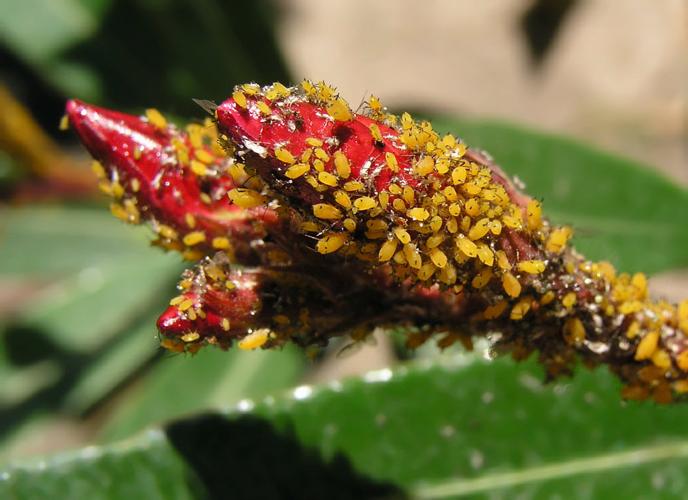Question: Since there are so many fig beetles this year, I wonder if I need to treat the soil with nematodes to stop the larvae from eating my vegetable roots. What do you advise?
Answer: The fig beetle (Cotinus mutabilis), also known as figeater, June beetle, green fruit beetle, or June bug, isn’t as harmful as you might expect. The adults that are plentiful now are seeking nectar and fruit juice from wherever they can. They aren’t the best fliers and so we find them crashing into things as they search for food. I found them very entertaining while eating outside this week. Not every restaurant patron is as excited to see them though so it’s fortunate they won’t be around for very long. They are attracted to ripe figs, as their common name suggests, although they are more likely taking advantage of holes in ripe fruit made by birds and other animals. They can be found on a wide variety of plants including fruit trees, flowering landscape plants with accessible nectar, tomatoes, and cacti. Their larvae are often found in garden compost and other decaying organic matter. They don’t feed on roots like their relatives back east so you don’t need to treat the soil to control them.
Q: Please tell me if these yellow insects are harmless. They are multiplying fast but only on these flowers.
A: They aren’t harmless but in the grand scheme of things, they aren’t terrible either. Aphids as a family will suck sap from your plants and reduce their vigor. The good news is they are tiny and each one does very little damage. This species are sometimes called oleander aphids (Aphis nerii) and they prefer certain types of plants such as milkweed and oleander. A simple spray with your hose once in a while will keep the population down enough to protect your plants.
Q: We have a very large/old saguaro in our front yard, as well as some other barrel cacti and other saguaros. About two years ago, we discovered we had the beginning of termite damage in our ceiling (attic space). We had the home treated and no problems since. The termite company said they were subterranean termites and that we may see the termites move and begin to do minimal damage to other wood outside the home. I started noticing what I believe are termite tunnels on our large saguaro. The damage became more evident later as the tunnels turned into craters left on the saguaro. The saguaro seems to be surviving. Now I’m noticing what looks like evidence of termites in the barrel cacti. Should we be treating the termites attacking the cacti or will they cause minimal damage and move on to other sources? Are they also subterranean termites and could you recommend a treatment that would not harm the succulents?
A: Termites on cacti are fairly common and don’t need to be treated. Termites are only interested in the dead wood on the outside of your cacti and can coexist with these plants. They are likely desert-encrusting termites (Gnathamitermes perplexus) rather than the subterranean variety that infested your attic. Termites are categorized as decomposers and they help recycle dead plant material into soil. It’s only when they get into our homes that we should be concerned and you already took care of that part.
Q: We have sweet acacia trees at the entrance of a property in Chandler that are having severe limb breakage and dieback lately. It looks like borer signs and I’m wondering if there is a good alternative tree I can recommend to the HOA board. Would a Red Push Pistache work well here? There are also a few ash trees that are showing similar signs throughout the same neighborhood. Do you think this could be caused by the same borer/pest?
A: The acacia tree in your photos is indeed suffering but in this case the borers are likely only a symptom rather than the cause. The holes indicate flat-headed borers and most species in this family of beetles are attracted to dead and dying trees. I recommend checking the history of irrigation practices for these trees. The species you mentioned should be receiving water every seven to 14 days during the summer to a depth of 24 to 36 inches. You can back this off to once every 10 to 21 days in the spring and fall, and every 14 to 21 days in the winter. The red push pistache is a good substitute as long as there is space for its mature size. It would likely have the same issue with irrigation if that were the problem so it would be good to address that before replanting. Since different tree species have somewhat different pests, it would be difficult to say the ash trees are having the same problem without seeing them.






